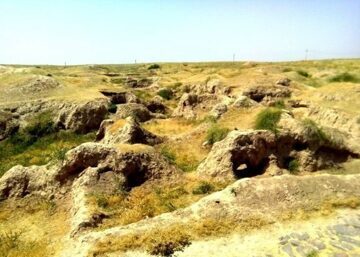 |
Nowadays there is a lot of information about Samarkand, its origin as a city, its sights. We know a lot about the history of Samarkand, its rulers, its cultural heritage. Much has come to light thanks to archaeological excavations, including excavations at the site of the Afrosiab site, located on the northern outskirts of modern Samarkand.
Scientists tend to believe that Afrosiab was the ancient capital of Sogdians, known as “Marakanda”. The city received this name in honor of the king of Turan - Afrasiab, who founded the city. In Iranian mythology Afrosiab is a descendant of Turans - the ancient nomadic and semi-nomadic Iranian-speaking people of Central Asia - the Saks.
It was here, on the site of the Afrosiab, before the conquest of Samarkand by the Mongols in 1220, the city of Samarkand was located. Genghis Khan ordered to destroy the city to its foundations. After the terrible act of Genghis Khan, the inhabitants did not dare to re-settle in their former place, and they founded the city around, at the foot of Afrosiab. Perhaps, this explains the location of the present Samarkand. The city is built up by an arc around the site of Afrosiab.
During the archaeological excavations samples of clay ornamented dishes, terracotta figurines, fragments of ossuaries (urns for the storage of remains), glassware, various tools, and women's ornaments were found. During excavations, coins of the Greco-Bactrian period, bronze mirrors, etc. were also found.
It was found that the city was intersected by straight paved streets and divided into quarters - the Huzar, was surrounded by powerful defensive walls dating back to the 7th-6th centuries BC. Inside the quarters was the citadel of Shahristan, temples, houses and craft workshops.
The constructions of the 6th-7th centuries were decorated with a highly artistic painting, where people were depicted in festive costumes carrying rich gifts accompanied by real and fictitious animals.
Today Afrosiab, an area of more than 200 hectares, is one of the largest archaeological sites, where excavations are still conducted. Not far from the ancient settlement there is a museum of the history of the foundation of Samarkand, in the collection of which various artifacts of the period of the ancient history of Samarkand are presented. To date, the museum's collection exceeds 22,000 unique exhibits.
Useful links:
Other sights of Samrkand
Samarkand
Tours round Samarkand





